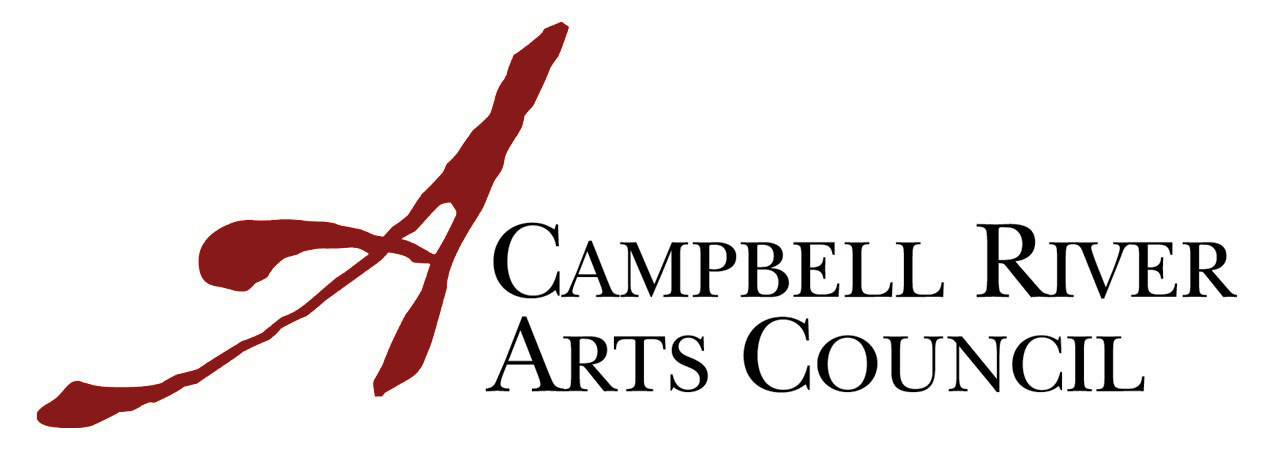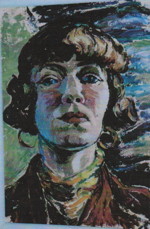Sybil Andrews
Sybil Andrews
 Sybil was born April 19, 1898 in an apartment over the family owned hardware store on Guildhall Street, Bury St. Edmunds, Suffolk, England. She was the third of five children.
Sybil was born April 19, 1898 in an apartment over the family owned hardware store on Guildhall Street, Bury St. Edmunds, Suffolk, England. She was the third of five children.
During World War I she worked as a torch welder for aeroplanes. She found time to study art with John Hassall’s home correspondence course. She had an exhibition of watercolours and pastels with Cyril Power in Bury St. Edmunds in 1921.
Sybil moved to London to attend Heatherley’s School of Fine Art studying under Henry G. Massey where she witnessed a demonstration by William Kermode on woodblock printing which greatly influenced her. She joined the Grosvenor School of Modern Art as Secretary in 1925. The Grosvenor School is historically noted for its advancement of English Furturism with a focus on the new medium of linocut printing.
In her London studio in Hammersmith she began to make architectural drypoints. She made a series of posters in collaboration with Power for the London Passenger Transport Board in 1929.
Sybil was represented by The Redfern Gallery in London (1929-1936) and was included in “The First Exhibition of British Linocuts” in June 1929.
Walter Morgan
During World War II Sybil worked at the British Power Boat Company near Southampton. She met and married Walter W. Morgan, a co-worker in the shipyards, in 1943. Walter was born in 1894 and was an accomplished machinist as well as a boat builder despite having lost his left arm below the elbow during World War I. They immigrated to Canada aboard Royal Mail SS Loch Ryan via the Panama Canal in 1947. Unfortunately, some of her linocut blocks were destroyed in the hold of the ship en route.
Campbell River
Campbell River was a remote logging town with a population of about 1,000 people when Sybil and Walter arrived in 1947. After they looked around the Island and the mainland of BC they came back to Campbell River. They bought an old house on a beach near Willow Point. No doubt the daily tides, the dramatic winds, and the bustle of early industrial logging would all appeal to Sybil’s Futurist sensibilities.
Sybil’s Art
Sybil Andrews noted that her favourite medium, the lino block, imposed its own discipline and characteristic style. In 1959 fire destroyed many of her prints at the Robertson Gallery in Ottawa and Walter used the compensation money to extend the house so that Sybil had a home studio. There she taught art and music for over forty years. In 1982, R.H. Hudson of London, England, published her only book “Artist’s Kitchen.” The book outlines her philosophy of art and provides an overview of her teaching principles. Sybil stressed the importance of capturing the idea on paper while it was ‘white hot.’ She encouraged her students to be constantly sketching. Trips were often made to Hudson’s Farm, north of Campbell River, to paint ‘en plein air.’
Walter died in 1986; Sybil died on December 21, 1992. A memorial was held for Sybil at Hudson’s Farm beneath a 400 year old Douglas fir tree and beautiful ancient maples.
The Cottage is Restored
The property deteriorated for years after Sybil’s death. The City purchased the Cottage in 1994 and the Campbell River Community Arts Council moved in shortly after. In 2004, the Cottage was slated for demolition. But thanks to the efforts of the Sybil Andrews Heritage Society, the Campbell River Arts Council and the City of Campbell River, the property was saved and included in the Frank James Park Development Plans. April 19th (Sybil’s birthday) was officially declared “Sybil Andrews Day” in 2007. In 2009, the Cottage became the first property listed in the Campbell River Heritage Registry. The house was restored in 2011.
Today the Cottage continues to be managed by the Campbell River Arts Council.
Click HERE to go the the website of the Sybil Andrews Heritage Society.

